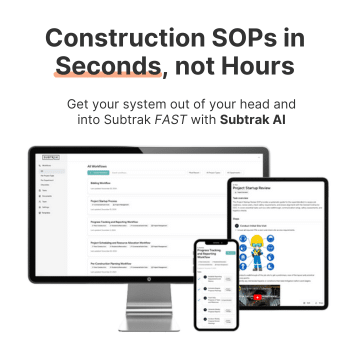Tool & Equipment Maintenance for Home Builder
The Tool & Equipment Maintenance workflow helps home builders and remodelers extend the lifespan of valuable assets across projects. It includes scheduling regular inspections, logging maintenance tasks, documenting repairs, and tracking service intervals. Managers review reports to ensure compliance, reduce downtime, and optimize purchasing decisions. By standardizing this workflow, builders improve efficiency, protect profitability, and reduce replacement costs. Clients benefit from timely work supported by reliable equipment. Teams gain accountability with documented maintenance logs and approvals. With this workflow in place, home builders can strengthen professionalism, improve efficiency, and deliver projects more reliably while ensuring tools and equipment remain in peak condition.
Create a master list of all tools and equipment requiring routine maintenance
Assign maintenance responsibility to a designated person or shop lead
Set maintenance intervals based on manufacturer recommendations or usage frequency
Tag or label equipment with service schedule reminders
Maintain a maintenance log for each item (date, service type, performed by)
Inspect tools and equipment regularly for wear, damage, or performance issues
Perform preventative maintenance tasks (oil changes, filter cleaning, calibration, etc.)
Replace worn parts or components as needed
Test equipment after service to ensure it’s job-ready
Remove unsafe tools from circulation until repairs are completed
Notify field crews of equipment status or downtime
Keep records of all maintenance for compliance and warranty tracking
Review maintenance history monthly to spot trends or recurring issues
Budget for replacement of aging or frequently repaired equipment
👈 Use this SOP template inside Subtrak
Edit with AI. Customize in seconds. Store and share all your SOPs and checklists in one place.
